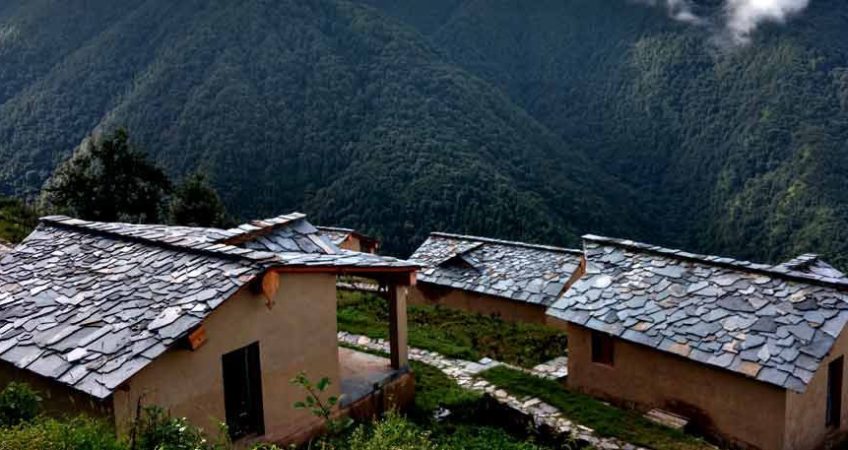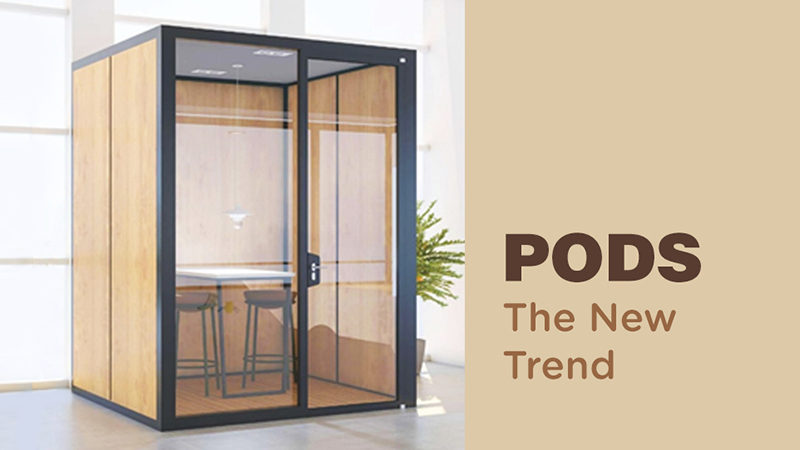
The Goat Village – A Case Study
The Garhwal region of Uttarakhand is almost entirely mountainous, with severe winters and torrential monsoons. Farming is largely terraced and subject to the vagaries of nature. Life for inhabitants is very hard, and often without the comforts of water, electricity and roads – something we city dwellers take for granted.
The herding of goats in Garhwal has been the engine of the mountain economy and yet sheep and goat populations have declined drastically over the years, creating an imbalance in the finely tuned eco-system of the forest, livestock, agriculture. The youth in Garhwal migrate to the cities to look for work that is easier and pays more.
The Goats Village Resort at Nagtibba was devised as the first in a series to generate employment and create a reverse migration of the youth from the cities.
The chosen site was very difficult to access – 99km drive from Mussoorie, one then trekked 2 km uphill, and it usually took about 2 hours to reach the designated Goat Village. Every bit of construction material had to make that trip on the back of mules, and every person walked. No mechanical intervention!
It was also a Seismic zone 5.
The promoters were looking for a design firm who would understand the terrain, the complications with constructing brick and mortar city-style dwellings and the dangers of a seismic zone 5 site. They were looking for a firm that would design a resort based on a declining way of life, and draw visitors to it so that they could then start the slow process of restoring and modernizing their way of life.
We were hired.

The biggest challenge was construction material and technique, and after a considerable amount of time spent in researching and understanding local material and traditional building styles, we found that the ancient but local construction technique called Koti Banal – was ideal.
The significant features of Koti Banal architecture are: Local stone and wood are used, simple rectangular plan, use of horizontal wooden beams that are lightweight yet flexible, low roof height, small openings, though we ended up using normal size openings, a solid raised platform at the base
The discovery and understanding of the technique that has resisted earthquakes and neglect for the past 1000 years was our answer to a critical aspect of the design problem.
A surprising benefit was the resurgence of interest in the Koti Banal style, as more locals were re-educated in this, and the promoters of Goats Village opened their second resort in Raithal, Uttarakhand. The masons and carpenters who would be familiar with this style of construction were difficult to find at first. But we persevered, resulting in a revival of the dying art of Koti Banal, and providing a livelihood to the masons, carpenters and artisans who had the know-how to make these dwellings.

While designing, we oriented the rooms as per the natural terraces – reducing the disturbance of natural slopes, and the beautiful views. Since the design was based on an absence of electricity, we provided large size windows along with dormer windows to get natural daylight inside throughout the day.
To save on resources, we used the old method of construction – using mud and lime mortar which is also an insulator. Cement was used in limited proportion as a stabilizer due to heavy rainfall.
The Dining room has a small herb garden which gets natural sunlight from the roof, which is made of clear polycarbonate sheets. This has become the hangout place for guests of all ages.
The kitchen has two areas – one cooking on a gas stove and the other – the local way of sitting on the floor and cooking on a “chulha with wood fire”
To save on another vital resource – timber, the platforms of the beds were made of bricks in the cottages.

The other equally important advantage of building in this style is the saving of resources – the rooms remain warm during winters – with snow outside, and cool during summers. This resort has no electricity except in the kitchen and dining area for emergencies and to charge your phones. For rooms – solar lanterns are provided.
Water harvesting with water storage was designed at the start of the project which is used for growing the vegetables, and for daily consumption.
The kitchen fresh supplies are sourced from local farms which grow organic vegetables, fruits, pulses and grains along with different types of honey.
Today, the Goats Village has 3 properties, and the eco-system is developing very well. The youth are staying back, and people are able to make a living building, servicing and maintaining these resorts.
It is a good feeling to know that I have been instrumental in creating the Goats Village.





